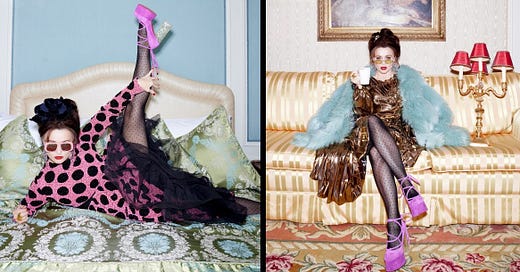The House of Lestrange
A study in self-possession through the style and soul of Helena Bonham Carter.
➢ EDITOR’S NOTE: En Vogue et Veritas is the evolution of Critically Yours. Each piece will be free to read until September 30, 2025, when the series becomes exclusive to paid subscribers. Thank you for being here at the beginning. ☆
En Vogue et Veritas: A series exploring the emotional architecture of personal style through the classical lenses of ethos (character), pathos (emotion), and logos (intellect)—revealing how fashion shapes, reflects, and expresses our inner worlds.
“My mum always said, ‘You are an individual, so be an individual.’ That stuck with me.”
I can still hear her shrieking laughter—sharp, unrelenting, seared into my mind like a curse. I can feel my hands curled into fists of horror, white as bleached bone, as Bellatrix Lestrange appeared onscreen. She was a manic wave of velvet and vile power, her wicked smile splitting her terrifyingly beautiful face in two. She was my childhood terror brought to life, lunging forward from the blue glow of the screen to steal the last breath from my lungs.
In my not-so-humble opinion, few actors possess a talent as exquisite—or as unnerving—as Helena Bonham Carter. Across decades and genres, she has absorbed entire audiences, pulling us into the strange, operatic orbit of her performances. She’s not easily watched: she is shocking, gorgeous, imbued with an all-consuming power that seems inhuman to possess.
Born into British aristocracy, she could have lived a very posh life of the fashionably restraint. Instead, she chose the theater, and all of its madness, mischief, and meaning. From her earliest period dramas to the gothic dreamscapes of Burton, she’s made her eccentricity an art form. Her fashion, like her filmography, defies simplification. She arranges textures according to mood, pairs eras together like lovers, and wears disarray as a crown. She is perfectly unique, impossibly chic and totally human. I tend to measure originality against her—how far someone’s willing to go to be undeniably, unrelentingly themselves.
In this edition of En Vogue et Veritas, through the classical lens of Ethos, Pathos, and Logos, we will dissect how the style of Helena Bonham Carter functions not as theatric display, but as a declaration of individuality.
Section I: Ethos, The Style of Character
Ethos /ˈē-ˌthäs/ (noun): From the Greek êthos, meaning character, custom, or moral nature. In rhetoric, it refers to the credibility and ethical appeal of the speaker. In style, it’s how one’s core values are expressed through fabric and form.
“You just have to do what suits you, and it doesn't matter if you don't look like everybody else. Be you. That's our gift and we've got to celebrate that.”
I don’t think I knew clothes could be clever until I saw the way she used them. Her wardrobe is a disruption—a loving one, but a disruption nonetheless. Where others strive for elegance as conformity, her wardrobe is a counter-argument to polite society.
For 13 years, Helena’s was romantically and creatively entangled with director Tim Burton, and this period of time had a significant deepening effect her ethos. Together, they conjured a gothic dreamworld where fantasy bled into reality: brocade bodices, deconstructed corsets and striped tights that felt plucked from a dark fairytale. After their relationship came to a close, her style was lighter, less constrained, incorporating more elements of soft femininity. Through each epoch, Helena has radically displayed her emotions directly on her sleeve, giving us a fantastic, ever-evolving drama of cotton and lace.
Most surprisingly, unlike most in her echelon of fame, Helena has never used a professional stylist. Every silhouette, every pair or pairs of shoes, every peep of bloomers beneath a ballgown is hers. She is not styled; she styles.
Dressing exclusively by and for oneself in a world that demands conformity is radical self-possession. She is not eccentric for effect. She is authentic to the bone.
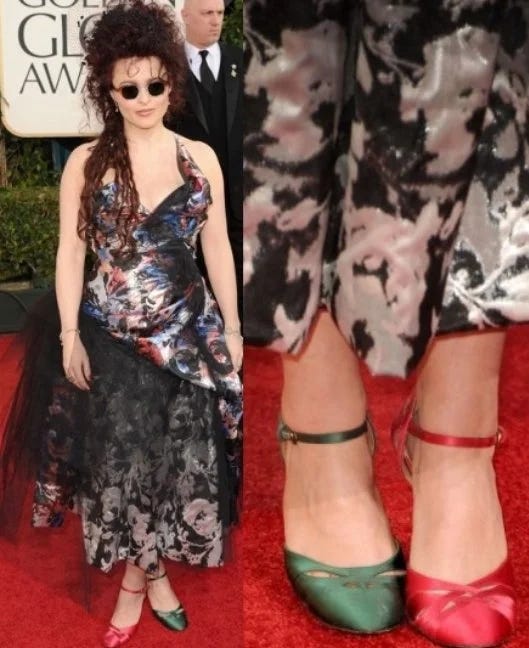
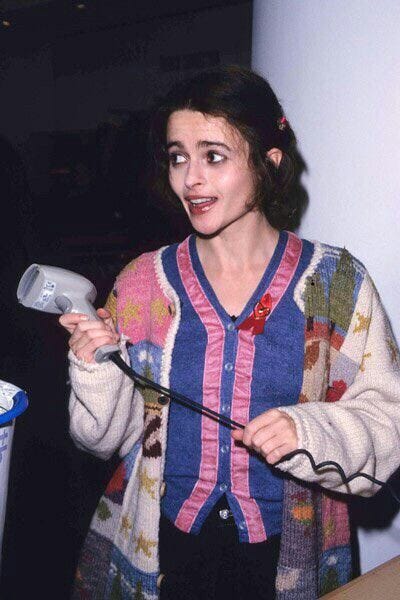

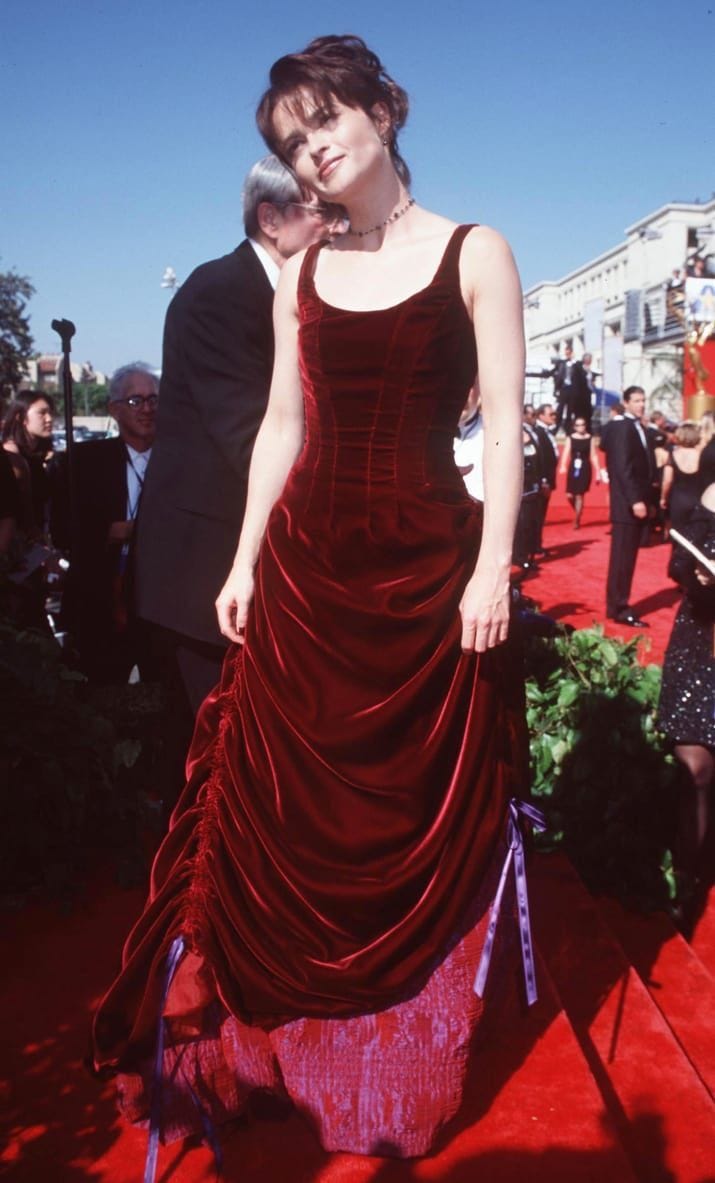
Section II: Pathos, The Style of Emotion
Pathos /ˈpā-ˌthäs/ (noun) From the Greek páthos, meaning suffering, experience, or emotion. Pathos is the emotional resonance of one’s feelings. In style, it is the visible ache or joy in how one dresses.
“There’s a lot of pain in dressing up sometimes. But if I can make something beautiful from it, I will.”
As someone who has always felt caught between two realms, the one others call reality and the one that exists in my mind, watching her felt like finding the first adult who hadn’t outgrown their imagination. She never looked like she was trying to belong, and I longed for that freedom, that feeling she wore so easily.
Helena dresses like a woman with nothing to prove but everything to feel.
She does not merely wear emotion—she embodies it, in crumpled velvet and half-buttoned whimsy, it’s as if the seams of her psyche have spilled out through her wardrobe. Her clothes are a visceral extension of her inner life: melancholic, mischievous, and at times, defiantly disheveled. She’s said she dresses to "have fun with pain"—and she does. There is no attempt to mask sadness or shrink for politeness.
Pathos, for Helena, is not weakness. It’s her rawest source of power.
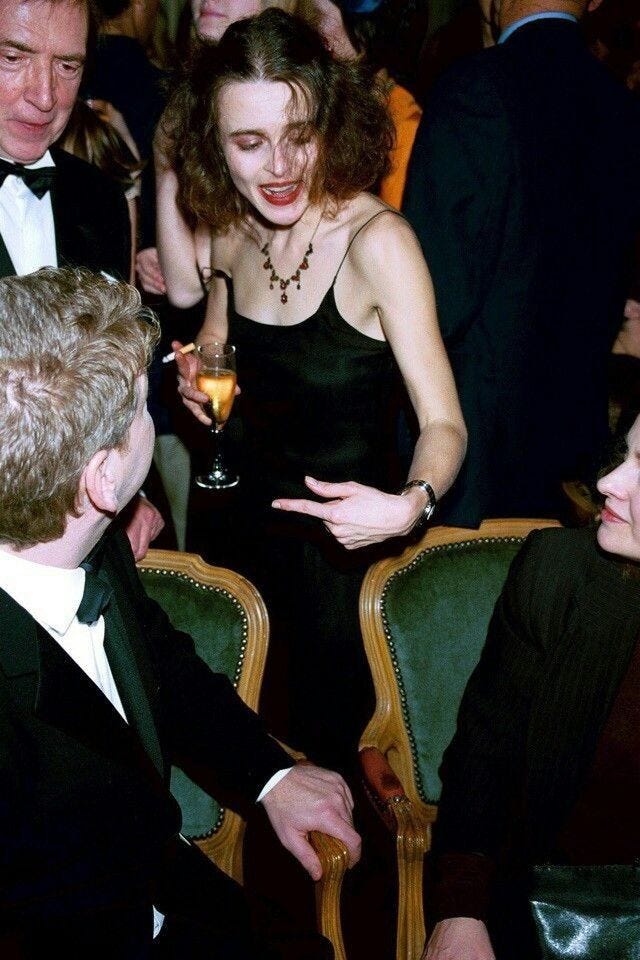
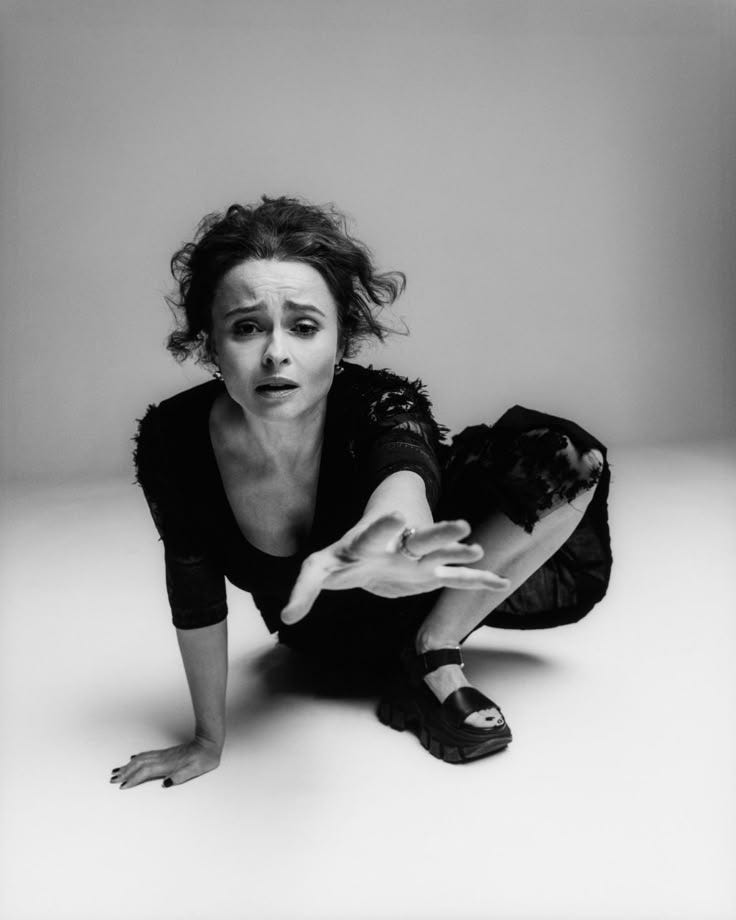
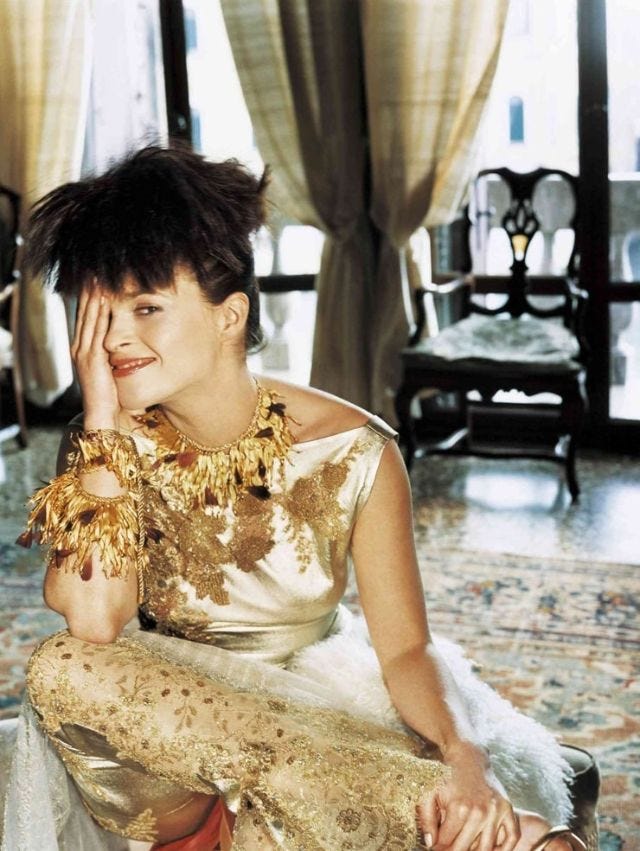
Section III: Logos — The Style of Thought
Logos /ˈlō-ˌgäs/ (noun) From the Greek lógos, meaning word, reason, or discourse. Logos is the logical structure behind an idea. In style, logos is expressed through personal, specific choices.
“My wardrobe is not random. It’s storytelling…People think it’s chaos. It’s not. There’s always a method. Always a reason.”
To misread Helena Bonham Carter’s style as mere eccentricity is to overlook its deliberate intelligence. It’s not that she doesn’t care what people think—it’s that she’s thought it through, and decided not to adjust.
Her aesthetic choices constitute a lifelong argument against homogeny—a sartorial manifesto rejecting the industry's obsession with symmetry and polish. Beneath the mischief, Helena is a master of method.
Even her costuming in film often blurs into personal philosophy. Her roles—Bellatrix Lestrange, Mrs. Lovett, Marla Singer—are not just characters, but fragments of her own inner discourse. In Helena’s lexicon, fashion says a great deal—about power, chaos, grief, legacy, and above all, agency. Nothing ever feels random; even the weirdest things seem to land exactly where she meant them to.
Her logos is that chaos is not the absence of thought…it is thought, liberated.

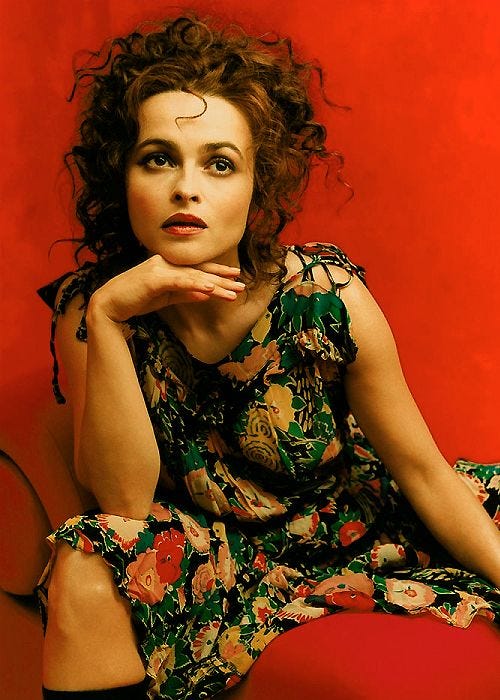
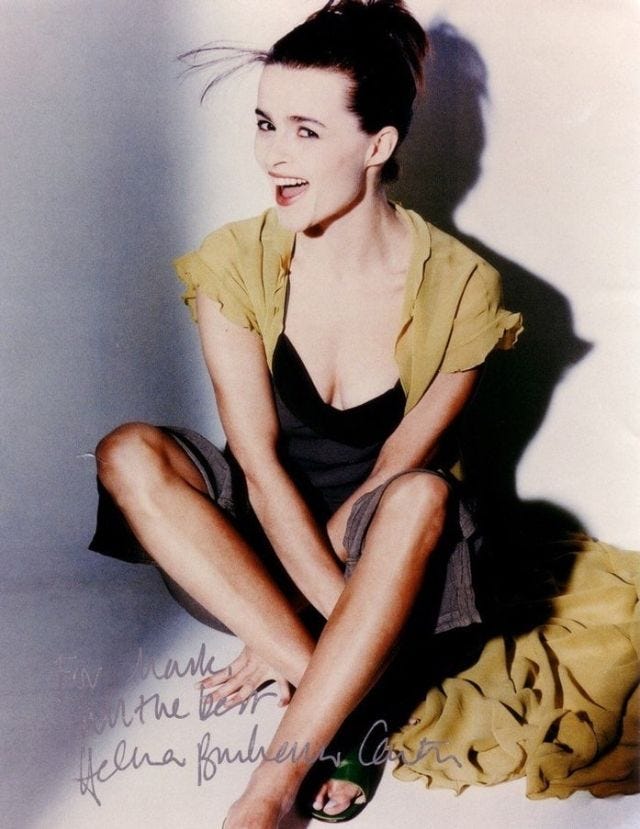
Closing Reflection
“I never wanted to be an icon. I wanted to be a question mark.”
Through ethos, pathos, and logos, Helena Bonham Carter’s fashion embodies the person she truly is. She dresses with unapologetic self-rule and the utmost intention.
There’s a kind of knowing you feel when someone else's self-expression aligns with your inner life, and Helena has always been that for me. She reminds me that some of us are meant to be felt before we’re understood.
En Vogue et Veritas,
Alexandra Diana, The A List
The Epilogue
THE THEATER OF HELENA
I couldn’t resist adding in some of my favorite characters from her filmography!
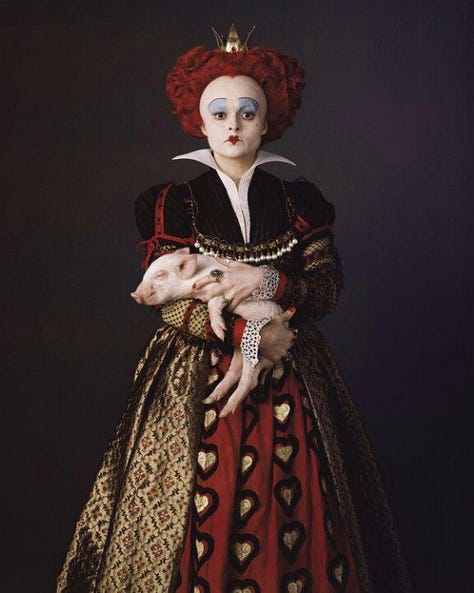
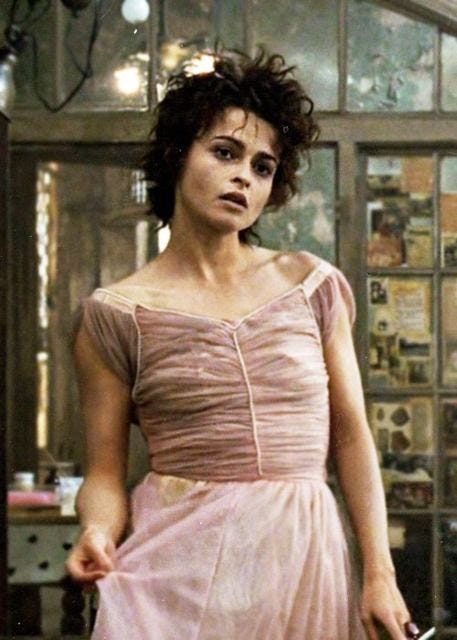
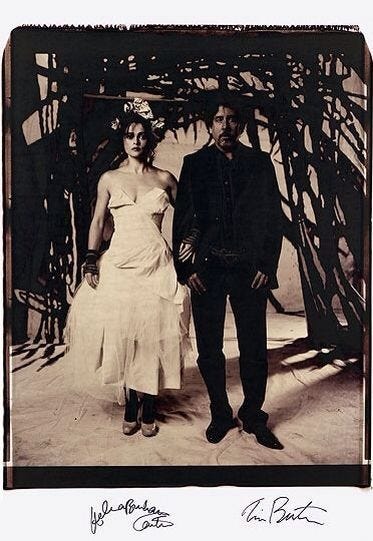





The Monarch of Madness
➢ EDITOR’S NOTE: En Vogue et Veritas is the evolution of Critically Yours. Each piece will be free to read until September 30, 2025, when the series becomes exclusive to paid subscribers. Thank you for being here at the beginning. ☆
Good Will, Worn Softly
The Sartorial Mind: A series exploring the emotional architecture of personal style through the lenses of ethos (character), pathos (emotion), and logos (intellect).
The Kennedy Identity: What JFK Learned from 007
“To be treated like royalty, you must act with confidence, but also restraint. A true king or queen never begs, never chases, never loses their composure.”
The Mystic, The Rebel, The Artist
"With freedom, books, flowers, and the moon, who could not be happy?”


